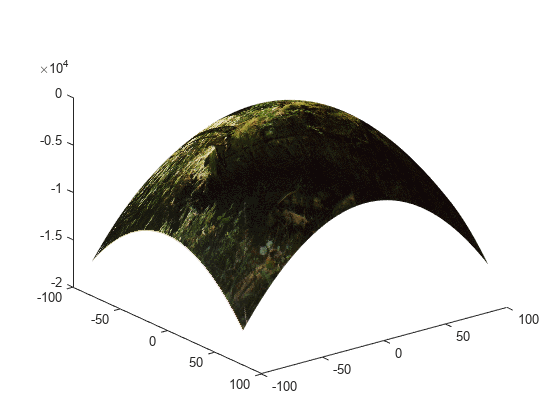warp
Display image as texture-mapped surface
Description
Examples
Input Arguments
Output Arguments
Tips
Texture-mapped surfaces are generally rendered more slowly than images.
The
warpfunction sets theYDiraxes property to"reverse". Values along the y-axis increase from top to bottom. To decrease the values from top to bottom, setYDirto"normal". This setting reverses both the y-axis and the image.
Version History
Introduced before R2006a

